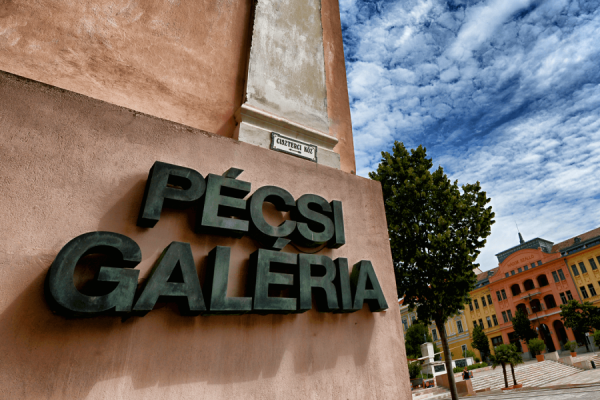A kiállítás három, életét és életművét elsősorban Pécs-Baranya kulturális vonzerejének közegében létrehozó alkotóművészt „szólaltat” meg. Életük közös terében különböző színezetű, tartalmú és hosszan tartó kapcsolatformák kötik össze őket. Megegyeznek a plasztikai, képi előadás jelentőségének felfogásában. A kiállítás a „korai” és a „friss” munkák szembesítését is elvégzi. Bükösdi Kálmán (1950) a tájképhez kapcsoló tematikai örökségben találja meg a dráma és harmónia megjelenítésének egyéni alteregóit. Méltán tekinthetjük a tájkép műfaj sikeres megújításán munkálkodó művésznek. Dechandt Antal (1959) szobraiban talált tárgyként tételezett ágbogok és tuskók, avitt szőlőkarók metamorfózisai szembesítenek az élet és a szépség felismert szabályaival. Szobrait a természetes idő és az oxidáció legalább annyira munkálják, mint a faragószerszámok. Szilágyi Szilárd (1959) munkái, az apró és méretes alkotások a természet és a vele garázdán bánó ember egymásra ható mozgásairól szólnak. Tematikai kínálatában a nyugtalanító viszonylatok Dantét felidéző köre sejlik fel.
Mindhárman a művészek mai „céhrendszerének” külső körén helyezkednek el. Egész eddigi életük folyamán keresték a szellemi függetlenségüket. Az „igazodás” bármely formális és közvetlen kényszerétől mentesek maradtak alkotó döntéseik megfogalmazásakor.
English:
The exhibition "speaks" of three artists who created their lives and oeuvres primarily in the cultural attraction of Pécs-Baranya. In the common space of their lives, they are linked by a variety of relationships of different colours, content and duration. They share a common understanding of the importance of plastic and visual performance. The exhibition also juxtaposes "early" and "recent" works. KÁLMÁN BÜKÖSDI (1950) finds in the thematic heritage associated with landscape the individual sub-genres of the representation of drama and harmony. He can rightly be regarded as an artist working on the successful renewal of the landscape genre. The metamorphoses of twigs and stumps, of old vineyard-stakes, found as objects in the sculptures of ANTAL DECHANDT (1959), confront us with the recognised rules of life and beauty. His sculptures are worked by natural time and oxidation as much as by carving tools. SZILÁRD SZILÁGYI's (1959) works, small and large, are about the interplay between nature and the interplay between man and nature. In his thematic offerings, a circle of uneasy relationships reminiscent of Dante is suggested. All three are situated on the outer circle of the contemporary 'guild system' of artists. Throughout their lives they have sought intellectual independence. They have remained free from any formal and immediate constraints of 'conformity' in formulating their creative choices.





































